nn
n
n John James Audubon has finished his magnum opus,nhe is famous on both sides of the Atlantic, he has impressed Kings, Queens andnPresidents, for once in his life he has money in the bank and a nice littlenplace on the banks of the Hudson.
n
n
n
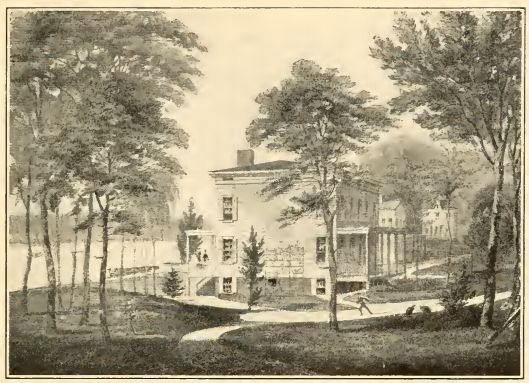 |
| Minnie’s Land – Audubon’s little place on the Hudson River |
n
n
n
nSo, do you imagine for one moment that he’sngoing to spend his remaining days sitting on the back porch, smoking his pipenor tending his garden? No Siree, let’s face it, that isn’t even going to crossna man like John J’s mind. Not whennthere’s the Viviparous Quadrupeds of North America to be getting onnwith, (and let’s be honest, there aren’t anything but viviparous quadrupeds in North America).
n
n
n
 |
| J J Audubon & J Bachman – Viviparous Quadrupeds of North America |
n
n
n
nThe plan was to produce two ‘atlas’ volumes, atnelephant size, containing 150 hand coloured lithographic plates, together withnthree Royal size octavo volumes of explanatory text. Unlike the double-elephantnBirds of America, the Quadrupeds was produced entirely innAmerica, with an initial subscribers list of three hundred, and were thenlargest single plate books completed in America during the nineteenth century.
n
n
n
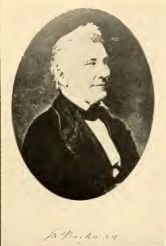 |
| John Bachman |
n
n
n
nThe work was produced in collaboration with John Bachman, a Lutheran ministernand long time friend of Audubon, who was a recognised authority on Americannmammalia, (sadly, history has not remembered the full importance of Bachman’sncontribution to the study of his country’s natural history).
n
n
n
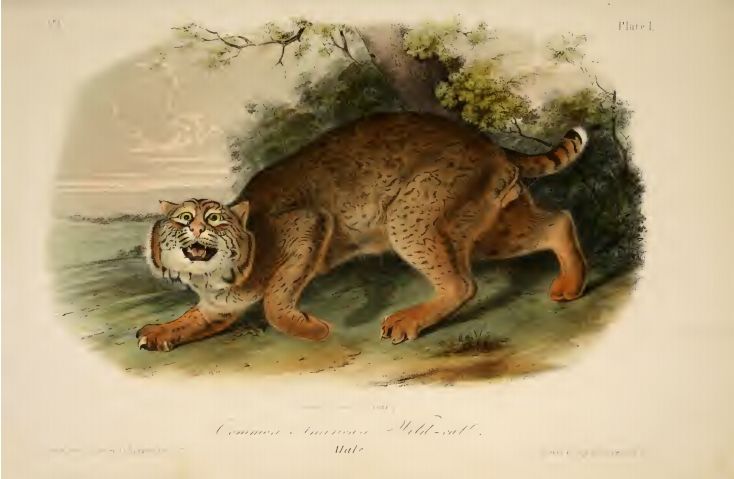 |
| Common Wild Cat |
n
n
n
nInitially, Bachmannwas somewhat reluctant to become involved in the venture, but he was won overnwhen Audubon assured him that the work would not be rushed and would receiventhe full care and attention that the subject justified. Bachman also insistednthat the Audubon’s bear the cost of producing the Quadrupeds, but alsonthat they receive the full profits, not least because his daughters, Maria andnEliza, were married to Audubon’s sons, John Waterhouse and Victor, and he hopednto provide some financial stability for them.
n
n
n
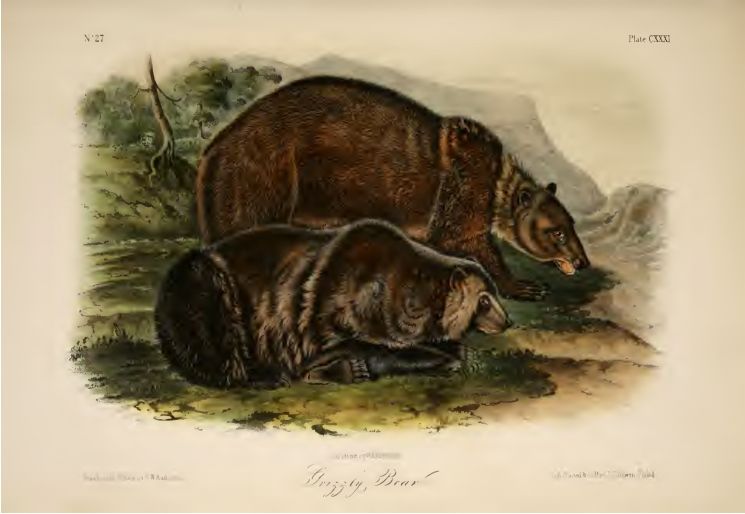 |
| Grizzly Bears |
n
n
n
nDisaster, no stranger to thenAudubons, struck twice in rapid succession; on September 15th 1840,nMrs John Audubon died at her old home in Charleston, aged only twenty-threenyears, from tuberculosis. On May 25th 1841, her sister Eliza, wifenof Victor, died from the same disease; she was twenty-two.
n
n
n
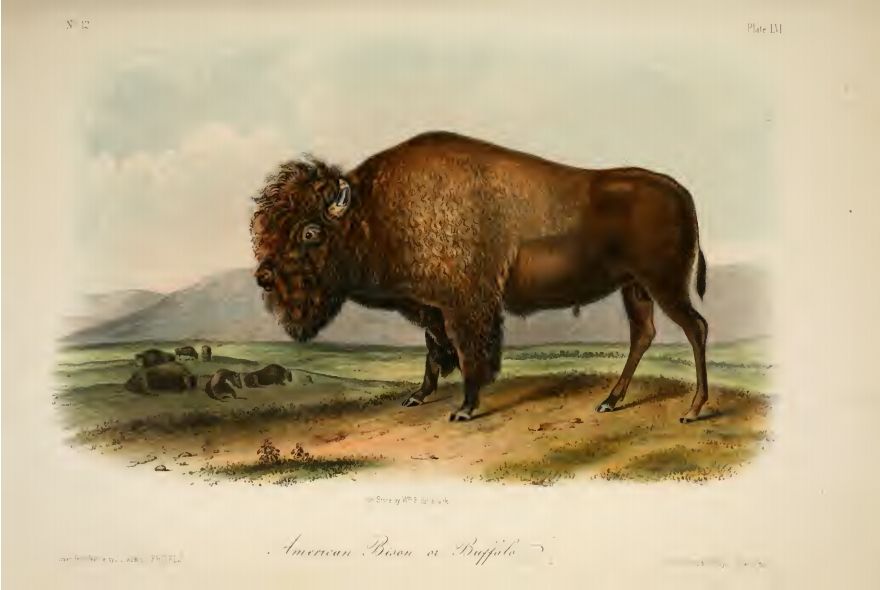 |
| Common Buffalo or Bison |
n
n
n
nThe Audubons and thenBachmans took refuge in the work, a distraction from the grief. The Audubonsnalso worked on a octavo edition of the Birds, of seven-volumes,ncombining reduced sized copies of the originals, incorporating the text fromnthe Ornithological Biographies. The initial subscription of threenhundred copies was quickly filled, a second three hundred also sold out, and bynearly 1841, the list stood at 1,475 copies.
n
n
n
 |
| Beavers |
n
n
n
nLike the Birds, the Quadrupedsnwas issued in instalments, thirty numbers of five plates each, at $10 pernnumber, with the costs underwritten by the profits from the octavo Birds.nIn 1843, the fifty-eight-year-old Audubon undertook an eight months’ trip upnthe Missouri and Yellowstone rivers, collecting specimens for the project, butnthe hardships he encountered severely damaged his health, and this was to benhis last expedition.
n
n
n
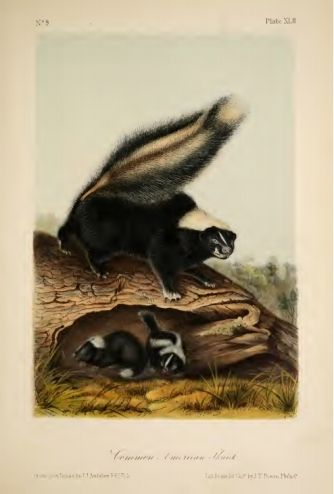 |
| Skunks |
n
n
n
nIn October, he returned home to Minnie’s Land and, inncollaboration with his sons, he began work on the first volume of the Quadrupeds.nBachman, in the relative isolation of Charleston, South Carolina, had no readynaccess to large libraries and needed Audubon to send him copied texts from thenrequired books, with notice of which animals were next on his list, togethernwith specimens from which he could make the necessary measurements andndescriptions.
n
n
n
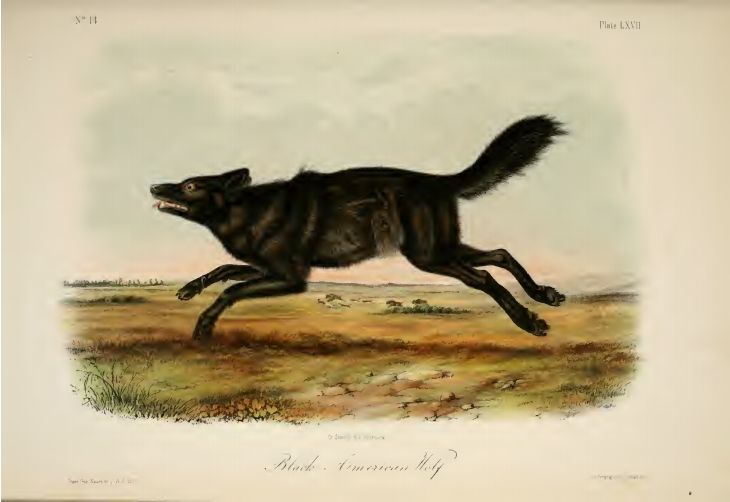 |
| Black Wolf |
n
n
n
nIn the end, driven to distraction by the lack of information,nBachman issued an ultimatum – send the necessary books and specimens or henwould be unable to provide the text to accompany the illustrations. Hencomplained about the amount of time that he had to dedicate to the writing, nondoubt unaware of the workload that John James Audubon considered to be thennorm. It worried him that his name was on the title page and the words he hadnpromised to supply would be inadequate. The Audubons responded by sendingnBachman whatever it was he needed, and the work continued.
n
n
n
 |
| Gray Fox |
n
n
n
nBy 1846, Audubon’sneyesight began to fail and work on the illustrations for the Quadrupeds passednalmost entirely to his sons. It must be said that, in spite of John WaterhousenAudubon’s skills, his works do not have that je ne sais quoi thatncharacterises the elder Audubon’s paintings (compare his Grey Fox, fornexample, to John W’s Moose).
n
n
n
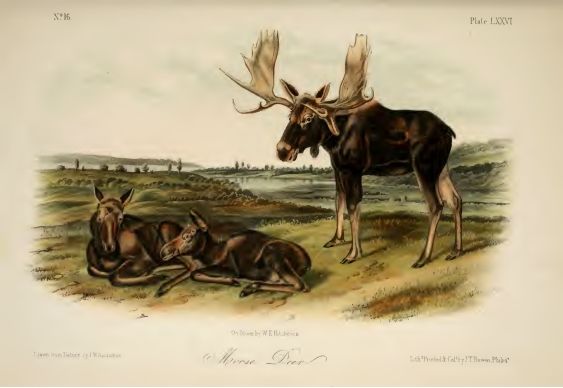 |
| Moose |
n
n
n
nAlthough he never went blind, as somenbiographers have written, his faltering sight left Audubon heartbroken, but thenreal decline came with his mental health, as his sanity began to depart.nSurrounded by family, friends and loyal retainers, he died at Minnie’s Land onnJanuary 27th 1851, “… as gently as a child composing himself fornhis beautiful sleep.”
n
n
n
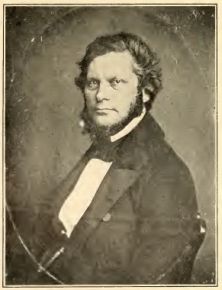 |
| Victor Audubon |
n
n
n
nVictor and John continued the work on the Quadrupeds,nunder the supervision of Bachman, and in March 1852, the third and final volumenwas finished. Work immediately began on a smaller folio edition, which appearednin 1854, using the same techniques that had been employed on the folio Birds.
n
n
n
 |
| John Waterhouse Audubon |
n
n
n
nAlthough inferior in scope and realisation to the Birds, the Quadrupedsnis still a truly remarkable achievement and deserves to be far better known tonthe general public, not least for the eminently readable text by Bachman.
nnn
n
n
n
n
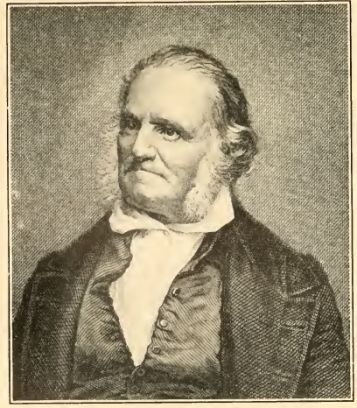 |
| John James Audubon |
n
n
nnn
nTomorrow -nAudubon’s legacy.
nnn
n
nnn
n



















